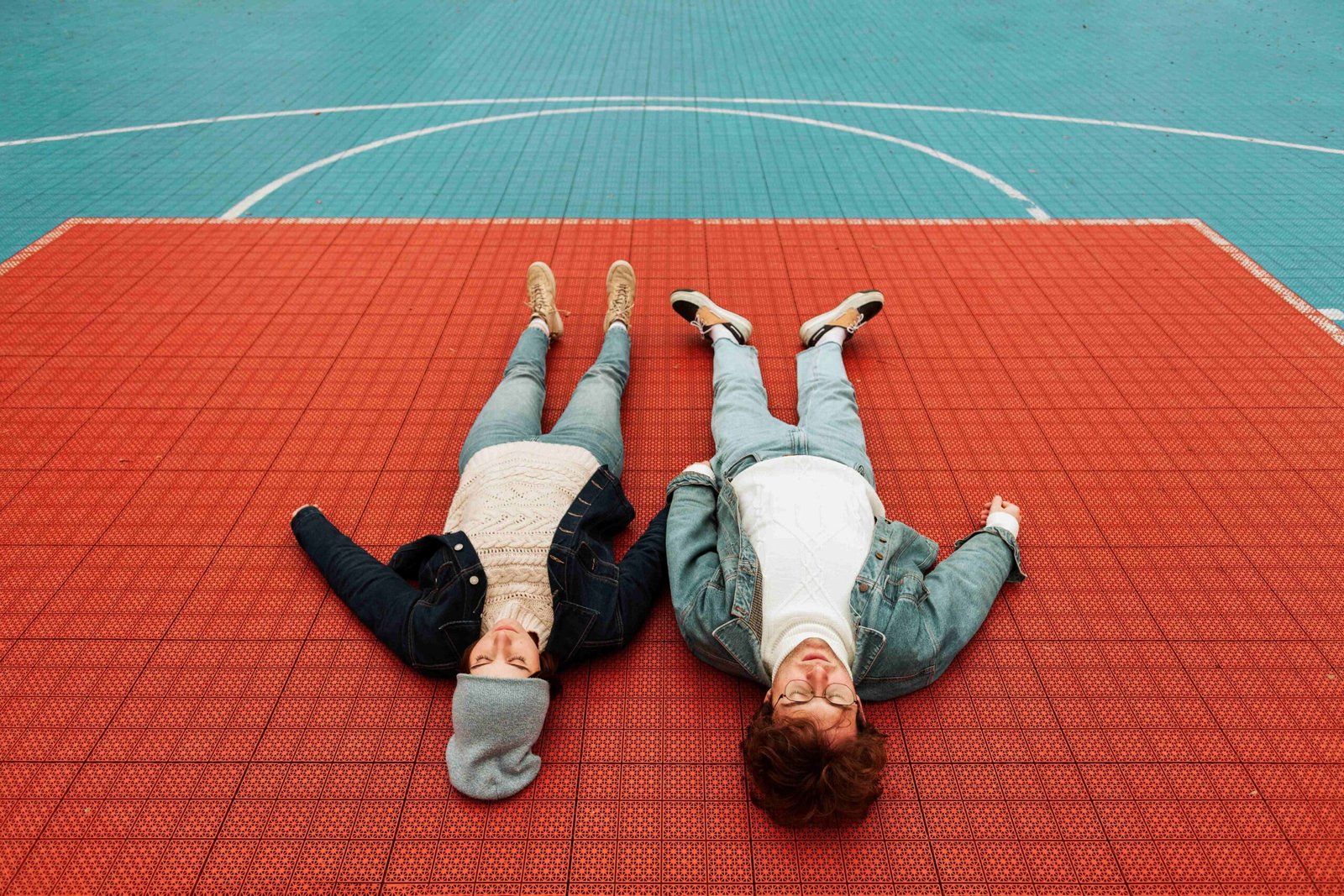When it comes to sports flooring, most people think first about grip, ball bounce, or impact protection. While these are critical for athlete safety and performance, one factor often overlooked until problems arise is durability. A sports floor isn’t just a short-term investment—it’s expected to withstand years of intense use, from heavy foot traffic and constant training sessions to equipment drag and competitive tournaments.
The core concern facility owners and decision-makers grapple with is straightforward yet vital:
“How well will the flooring withstand heavy foot traffic, equipment drag, and the pressure from sports shoes? Will it fade, dent, or wear down quickly?”
Durability and long-term performance directly affect not only the safety and quality of play but also the financial return on investment for sports facilities. A floor that wears down too quickly means expensive replacements, athlete dissatisfaction, and even higher injury risks.
This blog explores what durability truly means in the context of sports flooring, the factors that influence long-term performance, testing standards, material comparisons, maintenance practices, and how to make the right choice for different sports environments.
Why Durability Matters in Sports Flooring
1. Financial Investment Protection
Installing sports flooring is a significant capital expense. Facility managers want assurance that the floor will last for years without needing costly replacements or constant repairs. Durable floors lower long-term costs.
2. Consistent Athlete Safety
As a floor wears down, its performance features—like traction, shock absorption, and ball bounce—deteriorate. This creates unsafe conditions, putting players at risk of slips, injuries, and chronic joint stress.
3. Preserving Aesthetics
Floors are also part of a facility’s brand image. A well-maintained, durable surface maintains its color, shine, and professional appearance, creating a welcoming environment for athletes and spectators.
4. Multi-Use Facility Demands
Modern sports complexes are often multi-purpose, hosting basketball games one day, badminton tournaments the next, and community events on weekends. A durable floor must withstand constant transitions and varied demands.
The Real-World Challenges to Flooring Durability
Sports floors face a variety of daily stresses that challenge their long-term performance:
- Heavy Foot Traffic – Hundreds of athletes moving daily create friction and wear on the surface.
- Sports Shoes – Athletic footwear with hard soles or spikes accelerates surface abrasion.
- Equipment Drag – Basketball hoops, volleyball poles, gym equipment, and maintenance machinery cause dents, scratches, or gouges when dragged.
- Impact Loads – Jumping, sprinting, and sudden stops exert enormous pressure on certain areas of the floor.
- Environmental Factors – Humidity, moisture, and temperature fluctuations cause expansion, contraction, or warping, especially in wood-based floors.
- Chemical Exposure – Cleaning agents or spilled drinks can degrade the finish over time.
Understanding these stress factors highlights why durability is one of the most important considerations when selecting sports flooring.
Key Factors That Influence Durability
1. Flooring Material
The choice of material largely determines how well a floor will hold up:
- Hardwood (Maple) – Traditional for basketball; offers excellent resilience but requires careful maintenance against moisture and scratches.
- Vinyl/PVC Sports Flooring – Highly durable with wear layers engineered to resist abrasion and fading; popular in multi-sport facilities.
- Polyurethane – Seamless, durable, and resistant to scratches and dents; ideal for high-traffic or multipurpose gyms.
- Rubber Flooring – Extremely tough and resilient; commonly used in weight rooms or high-impact training spaces.
2. Wear Layer Thickness
Vinyl and synthetic floors often have a wear layer. Thicker layers mean higher resistance to scratches, stains, and wear, directly impacting longevity.
3. Surface Finish/Coating
Protective finishes guard against scratches, fading, and surface damage. High-quality finishes can extend a floor’s lifespan by years.
4. Subfloor Design
Durability isn’t only about the surface. A strong subfloor system ensures stability, distributes loads evenly, and prevents premature wear or structural failure.
5. Usage Intensity
The more hours per day the facility is used, the more stress the floor faces. High-performance flooring designed for professional or commercial use naturally lasts longer than budget alternatives.
Durability Testing Standards
To ensure sports floors can withstand real-world demands, manufacturers subject them to durability tests, including:
- Abrasion Resistance Test – Measures how well the surface resists wear from foot traffic and equipment.
- Indentation Resistance Test – Simulates heavy loads or equipment drag to see if the floor dents permanently.
- Impact Resistance Test – Evaluates whether the floor can handle repeated jumping, landing, or dropped weights.
- Colorfastness Test – Ensures the surface won’t fade from UV light or regular cleaning.
- Moisture Resistance Test – Determines if the material resists swelling, warping, or delamination in humid conditions.
Comparing Durability Across Flooring Types
| Flooring Type | Pros for Durability | Cons / Challenges |
|---|---|---|
| Hardwood | Long lifespan with proper care; strong surface for performance sports | Sensitive to moisture; requires refinishing; scratches easily |
| Vinyl / PVC | Wear-resistant; easy to maintain; colorfast; multi-sport friendly | May show dents from sharp objects if wear layer is thin |
| Polyurethane | Seamless surface; resists scratches and moisture; great for multi-purpose halls | Installation complexity; higher upfront cost |
| Rubber | Extremely resilient; ideal for high-impact zones; slip and dent resistant | Limited aesthetic appeal for traditional courts |
The right choice depends on the facility’s priorities—performance, multipurpose use, or heavy-duty resilience.
Maintenance: The Secret to Long-Term Performance
Even the most durable floor won’t last without proper care. Facility managers must adopt regular maintenance routines:
- Daily Cleaning – Removing dust, dirt, and debris prevents surface abrasion.
- Spill Management – Immediate cleanup of moisture or liquids prevents staining and warping.
- Scheduled Refinishing/Recoating – For hardwood floors, refinishing restores the protective layer. For synthetics, reapplication of coatings maintains slip resistance and durability.
- Proper Equipment Handling – Using floor protectors, wheeled carts, and lifting instead of dragging prevents dents.
- Climate Control – Keeping indoor humidity and temperature stable avoids expansion or contraction.
A combination of material quality and disciplined maintenance is what ensures a floor reaches its maximum life expectancy.
Long-Term Performance Indicators
When evaluating sports flooring, look for these durability benchmarks:
- Lifespan – High-quality hardwood can last 25–30 years with refinishing. Vinyl and polyurethane surfaces can last 15–20 years under heavy use.
- Warranty Coverage – Strong warranties (10+ years) often indicate manufacturer confidence in durability.
- Case Studies – Facilities that have used the same flooring system for decades demonstrate proven long-term performance.
The Cost of Poor Durability
Failing to prioritize durability leads to hidden costs:
- Frequent Repairs – Small dents, scratches, or tears accumulate into large-scale issues.
- Premature Replacement – A floor that fails in 5 years instead of 20 is a financial disaster.
- Athlete Dissatisfaction – Worn-out surfaces impact traction and performance, frustrating players.
- Injury Risk – Uneven, cracked, or dented floors become hazards, raising liability concerns.
Durability is not an optional feature—it’s a long-term safeguard for both athletes and investments.
Innovations in Durable Sports Flooring
Modern manufacturers are pushing durability further through innovation:
- Reinforced Wear Layers – Advanced polymers engineered for extreme abrasion resistance.
- UV-Resistant Coatings – Prevent fading and discoloration.
- Hybrid Systems – Combining wood aesthetics with synthetic wear layers for strength.
- Shock-Resistant Subfloors – Designed to handle repetitive impact loads without degradation.
These technologies are setting new standards for sports flooring longevity.
Choosing the Right Floor for Durability
Decision-makers should ask key questions before purchasing:
- How many hours per week will the floor be in use?
- Will the facility host single or multiple sports?
- Is the floor exposed to outside elements (humidity, sunlight, dirt)?
- What is the expected lifespan, and does it align with budget planning?
- What maintenance schedule is required to preserve durability?
By aligning material selection with facility needs, owners ensure both long-term performance and financial savings.
Real-Life Examples
- High School Gyms – Polyurethane or vinyl surfaces are chosen for their ability to handle diverse activities (sports + assemblies).
- Professional Arenas – Hardwood remains the gold standard for basketball, with refinishing cycles keeping it pristine for decades.
- Community Multi-Purpose Halls – Rubber or vinyl floors withstand everything from futsal to concerts without showing premature wear.
These examples demonstrate how different environments demand tailored durability solutions.
Conclusion
Durability and long-term performance are not just technical specifications—they are the backbone of a sports floor’s value. A well-chosen, well-maintained surface ensures:
- Resistance to foot traffic, equipment drag, and constant athletic pressure.
- Protection from fading, denting, and premature wear.
- A safe, consistent, and professional environment for athletes.
For facility owners, durability represents peace of mind. For athletes, it represents trust in the floor beneath their feet. And for the game itself, it ensures that performance and safety remain uncompromised year after year.
When choosing sports flooring, never compromise on durability—it is the foundation of both athletic excellence and financial sustainability.



